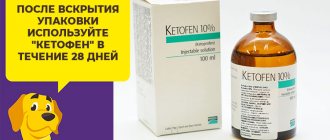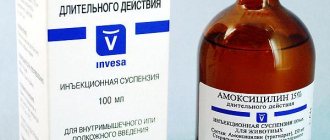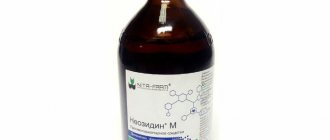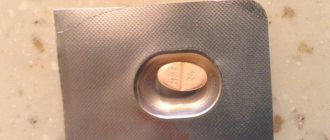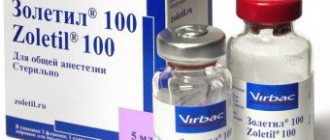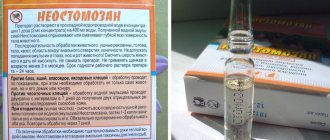In veterinary medicine, Cefazolin is used for cats that have encountered severe infectious diseases of a bacterial nature. This medication is a 1st generation antibiotic and acts against gram+ bacteria. The official instructions for use tell you more about Cefazolin, which you should read before using it to treat your cat. It is also imperative to show your pet to a veterinarian, who will establish a diagnosis and select effective and at the same time safe dosages for the animal.
Instructions and dosage
Most often, cefazolin is administered intramuscularly to cats, but if the disease is severe, then the pet is prescribed an intravenous drip of the drug.
It is imperative to purchase water for injection at the pharmacy, since antibiotics must be diluted. One capsule should be diluted with 5 milliliters of liquid.
If you suspect that your pet is not tolerating the drug well, you should contact a veterinary clinic. A qualified veterinarian will be able to advise you and also prescribe another remedy.
One bottle must be diluted with 5 ml of solution. The remaining solution can be stored in the refrigerator. The usual dose for an adult cat is 15 mg per 1 kg of pet weight.
Having fully assessed the disease, the doctor may increase the dosage to 30 milligrams. The course is approximately 10 days.
Cefazolin powder
Pharmacokinetics of cefazolin in cats under surgical conditions
The purpose of this study was to determine the plasma pharmacokinetic profile, tissue concentrations, and urinary elimination of cefazolin in cats under surgical conditions.
after a single intravenous dose of 20 mg/kg. Methods Intravenous cefazolin (20 mg/kg) was administered to nine young mixed breed cats 30 minutes before they underwent surgical procedures (oophorectomy or orchiectomy).
After the antibiotic was administered, blood, some tissue and urine samples were taken. Cefazolin concentrations were determined in all biological matrices and pharmacokinetic parameters were assessed.
Results. Initial plasma concentrations were high (Cp(0), 134.80 ± 40.54 μg/ml), with rapid to moderately broad distribution (distribution half-life [t½(d)] 0.16 ± 0.15 h; volume of distribution at steady state )] 0.29 ± 0.10 L/kg) and rapid elimination (body clearance [ClB], 0.21 ± 0.06 L/h/kg; elimination half-life [t½], 1.18 ± 0.27 h ; average residence time 1.42 ± 0.36 hours). 30–60 minutes after intravenous administration, tissue concentrations of cefazolin ranged from 9.24 μg/ml (subcutaneous tissue) to 26.44 μg/ml (ovary). Tissue/plasma concentration ratios ranged from 0.18 (muscle) to 0.58 (ovary).
Cefazolin urinary concentrations were high in cats, with 84.2% of the administered dose eliminated in the first 6 hours after administration.
Conclusions and significance Plasma cefazolin concentrations remained above the minimum inhibitory concentration of 2 μg/ml for up to 4 hours in all cats studied.
. This suggests that a single intravenous dose of 20 mg/kg cefazolin would be sufficient for perioperative prophylactic use in cats.
About adverse reactions
The main advantage is that it is not at all toxic compared to other similar medications. But this does not exclude the possibility that cats may not have individual intolerance to cefazolin sodium. If your pet has an intolerance to a component, the following undesirable reactions may occur:
- Cramps.
- An allergic reaction (most often it is accompanied by itching of the skin and a rash).
- Decrease in the concentration of leukocytes and platelets.
- Pathologies of the genitourinary system.
- Loss of interest in food.
- Stomach upset, vomiting.
As a rule, side effects are extremely rare and usually disappear within 24 hours. But if you notice a progressive effect of the harmful effects, then you need to immediately take your furry to the veterinary clinic.
A lump always forms at the injection site, so do not worry about this. It will resolve on its own within 48 hours.
Medicine at the withers
Cefazolin: description and features
Cefazolin is an antibacterial drug of the first generation of cephalosporins, which has a destructive effect on the cell walls of bacteria, destroying them and preventing further reproduction. It has a broad spectrum of action and effectively destroys a range of pathogens, including various strains of cocci, salmonella, shigella, Treponema pallidum and many others. The maximum therapeutic effect is achieved when using Cefazolin to treat diseases caused by gram-positive forms of bacteria. The drug does not affect some types of staphylococci, as well as Proteus, mycobacteria, rickettsia and Pseudomonas aeruginosa.
Cefazolin is available in the form of a white or yellowish powder, packaged in hermetically sealed glass vials of 250, 500 and 1000 mg. It is intended for dilution with sterile water and subsequent intramuscular or intravenous administration.
Cefazolin
After administration by injection, Cefazolin is quickly and well absorbed, and the maximum concentration of the active substance in the body is reached after about an hour. The drug penetrates almost all tissues, including joints, the cardiovascular system, kidneys, urinary tract, skin, etc., due to which its effect is manifested even in the first stages of therapy. The active substance is excreted by the kidneys within 24 hours.
Important! The active substance of Cefazolin is destroyed by gastric juice, so the drug is not used for oral administration.
Indications for use
Cefazolin is used for a variety of diseases caused by the activity of pathogenic organisms sensitive to the effects of the drug. These include the following pathologies:
The drug is used for diseases caused by bacteria sensitive to its effects.
- inflammatory and purulent processes of the ENT organs and respiratory system (pneumonia, pleurisy, abscesses);
- infection and sepsis of soft and bone tissues;
- peritonitis and other diseases of the abdominal cavity;
- meningitis;
- prevention of postoperative complications after surgical interventions;
- diseases of the urinary system and those that are sexually transmitted.
Attention! Like all other antibiotics, Cefazolin is ineffective against viral infections, so its use in such diseases is not only inappropriate, but also dangerous. For diseases of bacterial etiology, it is recommended to use it only when the sensitivity of their pathogens to the effects of the active substance is proven by laboratory tests.
Analogs
Like any other drug, cefazolin has analogues:
- The drug rofecin. The manufacturer also took care of his customer, and therefore included a special solution for diluting the powder. Although this is a small thing, it’s actually pleasant, since you don’t have to go to the pharmacy to buy an injection solution.
- Azaran. The price of the product is approximately the same, since it is also actively purchased.
- Amoxiclav. This is an antibiotic, it has an effect on microorganisms.
- Ceftriaxone. Has a powerful effect. But veterinarians consider it more toxic, as it more often causes unwanted reactions in cats.
One of the analogues is Ceftriaxone.
If your pet does not tolerate the drug well, for example, it resists during the injection. Then he can be given an injection with a weak dose of novocaine. In this case, he will know that such an injection will not cause him much pain, and next time he will not resist much. If you decide to use cefazolin to treat your cat, be sure to visit a qualified veterinarian first. He will be able to correctly calculate the dose for the treatment of a specific pathology.
Examine your pet regularly, as through examination you can notice symptoms of developing diseases. We wish you and your pet good health!
Drug interactions of cefazolin with other drugs in cats
- Bacteriostatic drugs. The bactericidal activity of cephalosporins may be affected by concomitant use of bacteriostatic agents (e.g., erythromycin, erythromycin, tetracycline, tetracycline).
- Loop diuretics (eg, torasemide, furosemide, or amphotericin amphotericin B). This combination carries an increased risk of nephrotoxicity; therefore, it is necessary to monitor kidney function in cats.
- Probenecid. Probenecid reduces the excretion of cephalosporins.
Cefazolin (Arterium)
Release form: Powder
Description of the drug
Composition 1 bottle contains the active ingredient: sterile cefazolin sodium salt (in terms of cefazolin) - 1.0 g. Dosage The drug is administered intramuscularly and intravenously (stream or drip). The drug should be dissolved before use. The solution should be prepared immediately before use. Freshly prepared solutions retain their physical and chemical stability for 4 hours at room temperature (or for 12 hours at a temperature of 2-8 C). For intramuscular administration, the contents of the bottle are dissolved in 4-5 ml of 0.9% sodium chloride solution or sterile water for injection. For intravenous jet administration, a single dose of the drug is dissolved in 10 ml of 0.9% sodium chloride solution and administered slowly over 3-5 minutes. For intravenous drip administration, a single dose of the drug is dissolved in 100-250 ml of 0.9% sodium chloride solution or 5% glucose solution; the injection is carried out over 20-30 minutes.
Purpose and possible restrictions
Veterinarians prescribe Cefazolin if the cat has been diagnosed with purulent-inflammatory diseases of the ENT organs. The effectiveness of the antibiotic for this disease was studied in detail by the candidate of biological sciences, who is the author of the scientific work, Tairov E.K., like many scientists, the therapeutic activity of Cefazolin was proven against such pathological conditions in cats as:
The use of the drug is advisable for peritonitis in an animal.
- peritonitis;
- pneumonia;
- purulent inflammation of joints and bone tissue;
- nonspecific inflammation of lung tissue;
- inflammatory process on the membrane covering the lungs and the wall of the chest cavity;
- infected wounds;
- postoperative complications.
However, not all pets are allowed to inject Cefazolin. The suspension will harm cats that are hypersensitive to any components of its composition, as well as to medications that also belong to the cephalosporin group. Treatment with the antibiotic in question is contraindicated in animals with severe renal impairment. Cefazolin injections are not recommended for small kittens or pregnant and lactating females due to the ability of the active substance to penetrate milk and cross the placental barrier.
Before using the antibacterial drug Cefazolin for cats, consultation with a veterinarian is required.
What antimicrobial drugs are used in cats?
- Trichopol (Trichopol) for cats (veterinary instructions for use, doses, indications and contraindications)
- Instructions for use of ceftriaxone for cats. Examine the breadth of the antibacterial effect of ceftriaxone in cats. Calculate the optimal dose of the drug. Improve therapy effectiveness by 200%
- Instructions for use of Metrogyl for cats. Explore the breadth of Metrogyl's antibacterial effects. Calculate the optimal dose of the drug for cats. Improve the effectiveness of therapy by 2 times
- Instructions for use of doxycycline for cats. Explore the breadth of doxycycline's antibacterial effects in cats. Calculate the optimal dose of the drug. Improve therapy effectiveness by 140%
- Instructions for use of clindamycin for cats (Clindamycinum). Study the breadth of the antibacterial effect of clindamycin in cats. Calculate the optimal dose of the drug. Improve therapy effectiveness by 140%
- Instructions for use of metronidazole for cats (Metronidazole). Study the breadth of the antibacterial effect of metronidazole in cats. Calculate the optimal dose of the drug. Improve therapy effectiveness by 140%
- Doxifin for cats (instructions for use, doses, indications and contraindications)
- Atovaquone for cats
- Azithromycin (Azithromycin) for cats (instructions for use, doses, indications and contraindications)
^Top
How to give a cat an injection of Cefazolin
Cefazolin is injected into the thigh area of cats, most often the hind leg. For the procedure, it is best to use a syringe designed for injecting insulin with a short needle - it reduces the risk of rupture of important blood vessels, and the animal will feel minimal discomfort.
It is better to restrain the cat before giving the injection.
It is better to give a cat an injection together, since antibiotic injections always cause pain.
How to give a cat an intramuscular injection at home? Why learn to give injections yourself? Advantages and disadvantages of intramuscular injections. We select syringes and needles for injections for cats. How to properly restrain your cat before injection. Injection technique. Possible complications in a cat after the injection. You will learn about this by reading the material on our portal.
Before the procedure, the pet needs to be calmed and well secured (for this you can use a retainer bag), then select a place on the thigh with the maximum thickness of the muscle layer and lightly knead it. Draw the required amount of solution into the syringe, insert the needle with a confident movement at an angle of 45 degrees and release the medicine by slowly pressing on the piston.
Cat carrier bag
Video - How to make an intramuscular injection
Occurrence of side effects
Cefazolin injections from Akos should be used with caution. Their use may cause side effects. After taking the medication, a person may experience the following unpleasant phenomena:
- hives;
- pain at the injection site;
- diarrhea;
- candidiasis;
- colitis.
In some cases, taking the medication can cause angioedema, anaphylactic shock, renal dysfunction, neutropenia, reversible leukopenia and thrombocytopenia. If a person feels unwell after taking the drug, you should immediately consult a doctor.
This is interesting: How to determine how many kittens a cat will have?
How it works
It has a bactericidal effect, when it enters the bloodstream it delivers it to the source of infection. It blocks binding proteins, and thus the microorganisms do not form a protective cell wall. As a result of this process, microorganisms soon die.
intramuscular administration
